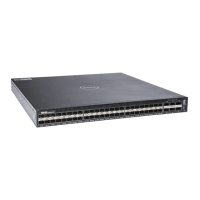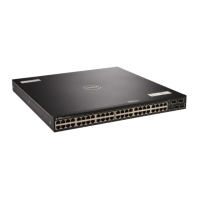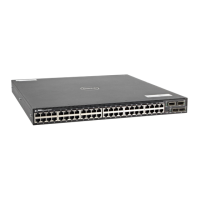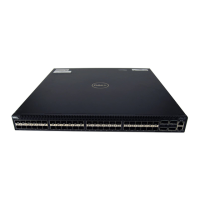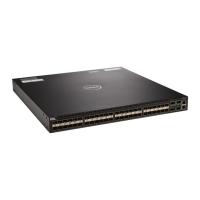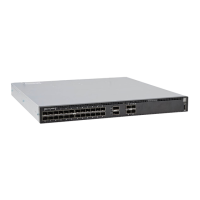CONFIGURATION mode
cam-acl l2acl 4 ipv4acl 4 ipv6acl 0 ipv4qos 2 l2qos 1 l2pt 0 ipmacacl 0 vman-
qos 0 ecfmacl 0 fcoeacl 0 iscsioptacl 2
NOTE: Content addressable memory (CAM) allocation is optional. If CAM is not allocated, the
following features are disabled:
• session monitoring
• aging
• class of service
You can enable iSCSI even when allocated with zero (0) CAM blocks. However, if no CAM blocks are
allocated, session monitoring is disabled and this information the show iscsi command displays
this information.
2 For a non-DCB environment: Enable iSCSI.
CONFIGURATION mode
iscsi enable
3 For a DCB environment: Configure iSCSI Optimization.
EXEC Privilege mode
iSCSI configuration: copy CONFIG_TEMPLATE/iSCSI_DCB_Config running-config.
The configuration files are stored in the flash memory in the CONFIG_TEMPLATE file.
NOTE: DCB/DCBx is enabled when you apply the iSCSI configuration in step 3. If you manually apply
the iSCSI configuration by following steps 1 and 2, enable link layer discovery protocol (LLDP) before
enabling iSCSI in step 2. You cannot disable LLDP if you enable iSCSI.
4 Save the configuration on the switch.
EXEC Privilege mode
write memory
5 Reload the switch.
EXEC Privilege mode
reload
After the switch is reloaded, DCB/ DCBx and iSCSI monitoring are enabled.
6 (Optional) Configure the iSCSI target ports and optionally the IP addresses on which iSCSI
communication is monitored.
CONFIGURATION mode
[no] iscsi target port tcp-port-1 [tcp-port-2...tcp-port-16] [ip-address
address]
• tcp-port-n is the TCP port number or a list of TCP port numbers on which the iSCSI target
listens to requests. You can configure up to 16 target TCP ports on the switch in one command or
multiple commands. The default is 860, 3260.
iSCSI Optimization 550
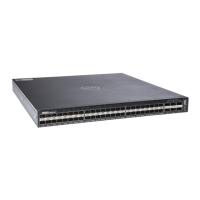
